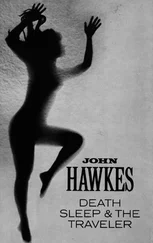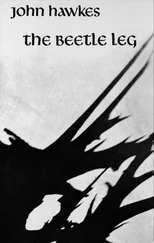Linden lowered the binoculars, but he didn’t hike back down the hill. He was larger than Gabriel and armed with two ceramic knives. Like most Harlequins, he displayed a certain arrogance about his power.
“I think this expedition is a foolish idea. There is only one road to the monastery, and that will be guarded by several police and army roadblocks. Most people come here in a tour bus. Arriving in a car is going to attract attention.”
“There’s no way around that,” Gabriel said.
Linden didn’t bother to hide his disdain. “First we have to find this secret chapel and then we have to get inside. And then what happens?”
“It sounds like you’re going to tell us,” Gabriel said.
“Then you cross over to the most dangerous realm. And maybe you can find Maya and maybe you cannot because she is already dead.”
“She isn’t dead,” Gabriel said.
“Maya would not want you to risk your life for her. There is only one logical plan. If we find an access point in the chapel, then I will be the one to cross over.”
“You’ve never been to the First Realm.” Gabriel said. “I know the city.”
Linden turned to Simon Lumbroso. “Explain why this is the correct decision.”
Simon raised both hands. “Please. I am not part of this argument.”
Gabriel stood on the ridge, trying to figure what to say. He couldn’t use the word “love.” That was a meaningless emotion for a man like Linden. “Maya went there to save me. I feel the same obligation.”
“Travelers don’t have obligations to Harlequins!”
“I’m going to the monastery, Linden. And when I find the access point, I’m crossing over on my own. If you don’t want to be part of this, I’ll tell the driver to take you back to Cairo.”
Gabriel trudged back down the hill to the car and Simon followed. A few minutes later Linden climbed back in the car, slamming the door shut. All three men stayed silent for the rest of the journey. The Egyptian driver seemed to realize that his passengers had argued. He kept glancing at Linden as if the Frenchman was about to explode.
The road followed a dry riverbed up a canyon. They passed through one guard post, and then another. The final checkpoint was run by a bored group of police officers who were sipping tea and smoking from a hookah. Tour buses were parked a hundred yards up the road; they had their engines on and their air conditioners running.
“Most of the tourists come here at two o’clock in the morning to climb Mount Sinai,” the driver explained. “If they’re too fat to walk, the Bedouin carry them up the trail on camels.”
The monastery guesthouse was a complex of white buildings with a terrace shaded with Italian cypress and olive trees. The guesthouse manager checked them in while a teenage boy with a crippled leg carried their luggage to their rooms. The flushed-face tourists who had just returned from their climb were sitting on the terrace next to the guestroom gift shop and restaurant.
“Go to the church and look for the hidden chapel,” Linden told Gabriel and Simon. “I will talk to the abbot and see if I can establish a financial rapport.”
As Gabriel and Simon followed a stone walkway up to the monastery, they could see two Bedouins helping an elderly man off a camel while tourists hiked down a switchback trail. “Many years ago, my brother climbed this mountain,” Simon said. “There were Bedouin all the way up, selling bottled water and candy bars. The price gets higher the closer you get to the Holy Chapel.”
The monastery had been built like a fort to defend the monks from desert raiders. A rectangular wall made of massive sandstone blocks encircled the church and all you could see from the walkway was the top of a bell tower. After paying admission, Gabriel and Simon entered through a small door cut into the wall. St Catherine’s Church was at the center of a courtyard surrounded by three levels of monastery offices and dormitories. The gap between these monastery rooms and the church itself was quite small-about twenty feet on the western half of the church and less than eight feet on the opposite side.
Different groups of tourists squeezed into this gap while their guides shouted at them in various languages. Most of the women wore tank tops and Capri pants, and for modesty’s sake they had covered their heads and bare shoulders with gauzy scarves. While Simon inspected the outside of the church, Gabriel followed the crowd to the north end of the court. There was a bush growing there-supposedly the descendant of the original flaming bush-and the tourists pushed and shoved each other to grab souvenir leaves.
Simon touched Gabriel’s shoulder and spoke quietly. “No sign of the chapel. The church itself is 40 meters wide and 120 meters long. Let us see what it looks like inside.”
They passed through two sets of doors and entered the church. Frayed carpets covered the marble floor and muffled their footsteps. The bright desert sky disappeared and the only light came from oil lamps and candleholders hanging from chains attached to the blue-green ceiling. The most striking feature of the church was an elaborate gold and silver screen between the public area and the altar. A monk wearing black robes stood in front of the screen and hissed at anyone who tried to take a photograph.
Gabriel and Simon inspected a reliquary for St. Catherine that held a section of her leg; it looked like an old chicken bone found in the backyard. Then Simon paced out the interior dimensions of the church while Gabriel sat in one of the wooden pews. A massive brass chandelier hung overhead, and he realized that it was in the shape of a dragon. Icons of saints and martyrs covered the walls. They stared at him with large black eyes and Gabriel felt like he was being judged by some heavenly tribunal.
A chattering group of Christians from Goa left the church, followed by a crowd of Russians and third group of Poles. At that moment, the church became silent, peaceful, extraordinarily holy. Even the monk seemed to relax. He stared at Simon and Gabriel-decided they were harmless-and left through the main entrance.
“Follow me,” Simon told Gabriel. “I think I found the chapel entrance.”
Gabriel left the pew and hurried down the aisle. A tapestry hung on the wall at the front of the church. It was a murky image of Moses parting the Red Sea. Touching outside of the dusty cloth, Gabriel felt a door handle.
“Is it the right location?”
“Yes. It matches Youssif’s map…”
Before they could pull back the tapestry, the main door squeaked open and the monk reappeared with a new group of tourists. Gabriel and Simon left the church, crossed the courtyard and passed through the gate in the monastery wall.
“I paced the length of the church when we were inside,” Simon said. “Factoring in the thickness of the wall, I think there is just enough space for a hidden room.”
“Do you think Linden can make a deal with the monks?”
“Who knows? I’m sure he is prepared to offer a bribe.”
The two men circled around to the eastern side of the monastery. During the modern era, the monks had decided to install running water and a sewage system. Instead of drilling through the wall, they had bolted a four-inch water pipe to the outside of the sandstone. Gabriel touched the rough surface of the pipe and looked up.
“I could climb this to the roof. Once I was up there, there’s a gap between the monk’s living quarters and the church. I could jump onto the roof of the church and get inside through the bell tower.”
“That sounds like a good way to break your neck,” Simon said. “Let us go back to the guesthouse and see if our friend had any success.”
They found Linden sitting on the terrace near the guesthouse restaurant. The French Harlequin looked out of place among the pilgrims. Most of them were women wearing black dresses with white scarves covering their hair and heavy silver crosses hanging from their necks. The few men in the group wore frayed suit coats and white shirts buttoned up at the collar. They chained smoked cigarettes while chatting with the Greek Orthodox priest who led the group.
Читать дальше












